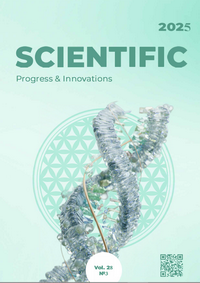Species composition, bioecological characteristics, and population dynamics of pests of perennial leguminous grasses
DOI:
https://doi.org/10.31210/spi2025.28.03.19Keywords:
Sitona lineatus, Hypera postica, Adelphocoris lineolatus, Acyrthosiphon pisum, Heliothis viriplaca, integrated plant protectionAbstract
Perennial leguminous grasses are important forage crops in the agrocenoses of Ukraine, but their productivity is significantly reduced due to damage from various pests. The insect pest fauna of perennial leguminous grasses is dominated by beetles (31 %), followed by thrips (20 %), moths (20 %), hemipterans (11 %), and true bugs (8 %). This study aims to systematize information on the species composition of pests, their bioecological characteristics, and the dynamics of their populations. The research conducted from 2023 to 2025 showed that the main pests of perennial leguminous grasses in Ukraine are root weevils, alfalfa weevils, clover root bugs, pea aphids, and clover seed weevils. Additionally, the pest complex includes the yellow alfalfa seed weevil, alfalfa root weevil larvae, and thrips, which can pose a threat to crops under favorable weather conditions. Throughout 2023–2025, the population of root weevils remained stable with slight fluctuations that did not significantly affect the overall condition of the crops. The population of alfalfa weevils decreased in 2024 compared to 2023 and continued to decline in 2025. The number of clover root bugs remained stable, showing no significant variation. Aphid populations slightly decreased in 2024, indicating reduced pest harm, though their numbers are still relatively high, requiring constant monitoring. The population of alfalfa leafhoppers has steadily decreased. The zonal dynamics revealed that the main areas of pest distribution are the Steppe and Forest-Steppe regions, where warm conditions promote the development of pests such as root weevils, alfalfa weevils, clover root bugs, and alfalfa leafhoppers. In contrast, the Polissya region has less favorable conditions for pest development due to lower temperatures and a shorter growing season. Therefore, understanding the bioecological characteristics and population dynamics of pests is crucial for developing effective integrated pest management strategies for perennial leguminous grasses.
Downloads
Published
How to Cite
Issue
Section
License
Copyright (c) 2025 Scientific Progress & Innovations

This work is licensed under a Creative Commons Attribution 4.0 International License.

 Creative Commons Attribution 4.0 International Licens
Creative Commons Attribution 4.0 International Licens